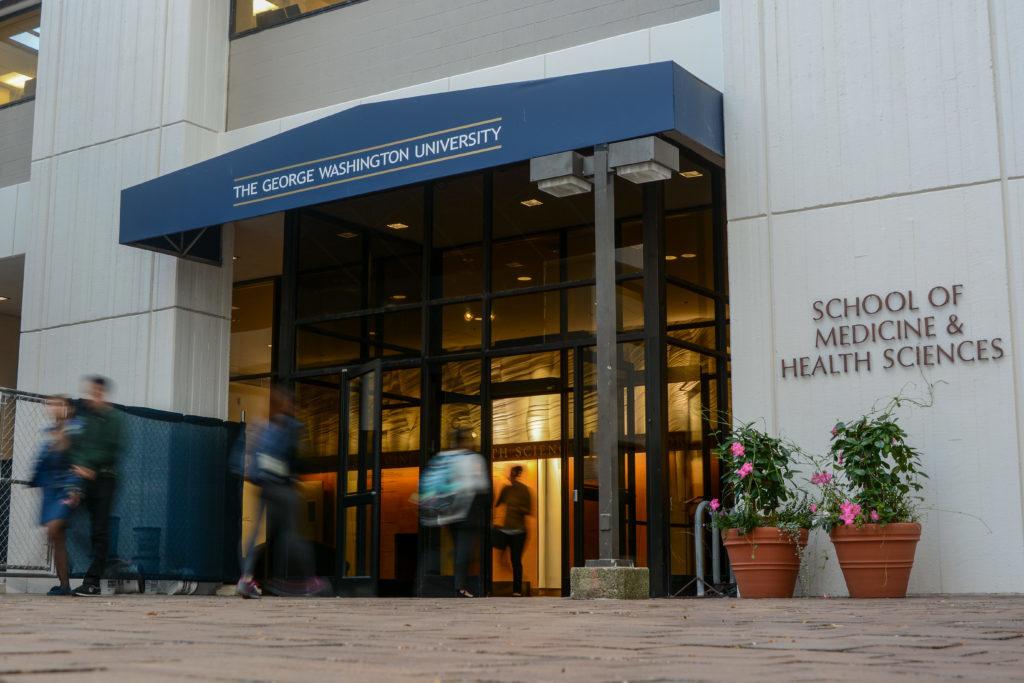A new medical school course this semester teaches future doctors how to keep their patients on a healthy diet.
The school added a course on Culinary Medicine this fall to help students develop a more holistic approach to studying medicine. The course is part of an overall effort at the medical school to address overlooked health factors including a patient’s day-to-day diet, faculty said.
To develop the Culinary Medicine course, the School of Medicine and Health Sciences turned to Tulane University – a pioneer in the field. GW joined 31 other medical schools, two nursing schools and five residency programs to base their curriculums off courses offered at Tulane, according to the medical school website.
Seema Kakar, an assistant clinical professor of medicine, said the new elective will help students better inform future patients on diet, grocery shopping habits and meal preparation to shape a healthier lifestyle.
“It’s an issue for pretty much all our patients in different ways,” Kakar said about nutritional health. “It’s beneficial for our students to have a really good understanding of it, for themselves as well as for their patients.”
Kakar is teaching the course along with Rob Donis, a chef in the GW Food Institute; Natalie Nicolas, the lead dietician for Medical Faculty Associates and Gisela Butera, a reference instructional librarian at the Himmelfarb Health Sciences Library, according to an SMHS release.
The course, which will include both traditional lectures and hands-on cooking labs, will teach medical students how to lead by example in their dietary choices. Kakar said the course will go beyond the usual “eat less fat and eat more fruits and vegetables” nutritional advice to give a more detailed analysis that will help students more effectively advise patients.
Students will use the teaching kitchen in at the Capital Area Food Bank, a District-based non-profit, as a laboratory for the course, according to the release. The Capital Area Food Bank also stocks the shelves at the GW campus food pantry, which opened last year.
Randi Abramson, an assistant clinical professor of medicine, said the course is especially important due to increased attention on the link between high-calorie and high-salt diets and poor overall health.
“That is really helpful to keep people generally healthier and not waiting for them to have a specific disease that requires a specific intervention,” Abramson said.
Abramson said all students studying medicine should understand health disparities among their patient population, including economic challenges that can impact a patient’s access to healthy, affordable food.
“It’s really helpful for big picture. You can bring all that knowledge into the exam room for an individual,” he said.
The new courses come as the medical school seeks to increase the scope of its course offerings. Last month, the school launched the Office of Integrative Medicine and Health, designed to help doctors understand the full range of social, physical, emotional, mental and spiritual influences on health, according to a release.
Timothy Harlan, the executive director for the Goldring Center for Culinary Medicine and associate dean for clinical services at Tulane University, said more universities are offering courses on culinary health and more physicians are seeing a need to explore health issues from a dietary angle.
These kinds of courses often include several online components like readings and lectures, and in-person cooking sessions, where students get a more hands-on experience, he said.
“Patients who come in to see a physician are sitting in the examination room because of food,” Harlan said.
Rupa Mahadevan, a health system clinician of pediatrics at Northwestern University, said education on nutritional health is generally lacking in medical school programs nationwide.
“A lot of times medical students don’t come out with any proper nutrition knowledge,” Mahadevan said. “We’re hoping that a culinary medicine elective will kind of bridge that gap in helping students not only make sense of their own behaviors but also their patients.”





